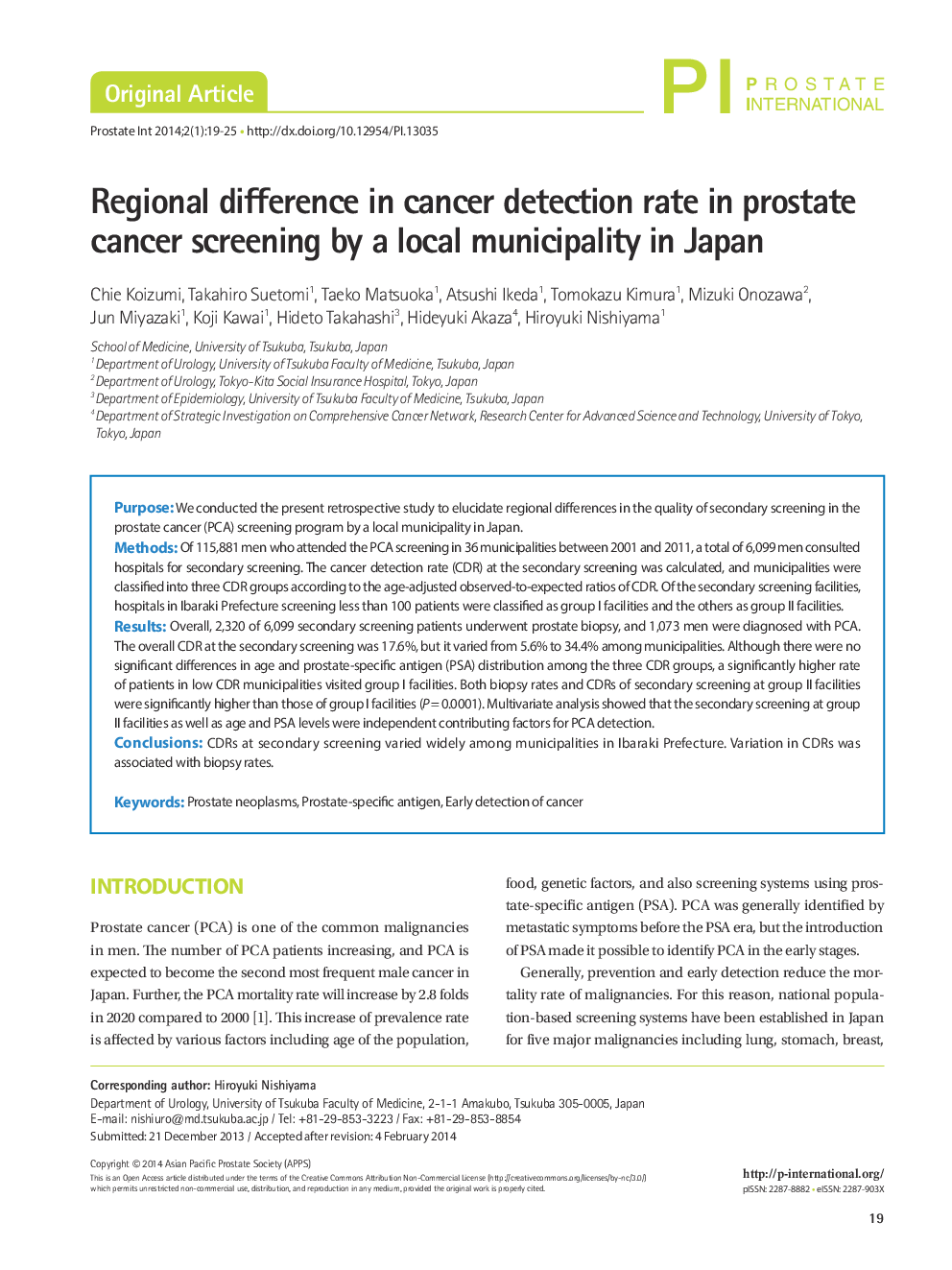| Article ID | Journal | Published Year | Pages | File Type |
|---|---|---|---|---|
| 4274181 | Prostate International | 2014 | 7 Pages |
PurposeWe conducted the present retrospective study to elucidate regional differences in the quality of secondary screening in the prostate cancer (PCA) screening program by a local municipality in Japan.MethodsOf 115,881 men who attended the PCA screening in 36 municipalities between 2001 and 2011, a total of 6,099 men consulted hospitals for secondary screening. The cancer detection rate (CDR) at the secondary screening was calculated, and municipalities were classified into three CDR groups according to the age-adjusted observed-to-expected ratios of CDR. Of the secondary screening facilities, hospitals in Ibaraki Prefecture screening less than 100 patients were classified as group I facilities and the others as group II facilities.ResultsOverall, 2,320 of 6,099 secondary screening patients underwent prostate biopsy, and 1,073 men were diagnosed with PCA. The overall CDR at the secondary screening was 17.6%, but it varied from 5.6% to 34.4% among municipalities. Although there were no significant differences in age and prostate-specific antigen (PSA) distribution among the three CDR groups, a significantly higher rate of patients in low CDR municipalities visited group I facilities. Both biopsy rates and CDRs of secondary screening at group II facilities were significantly higher than those of group I facilities (P=0.0001). Multivariate analysis showed that the secondary screening at group II facilities as well as age and PSA levels were independent contributing factors for PCA detection.ConclusionsCDRs at secondary screening varied widely among municipalities in Ibaraki Prefecture. Variation in CDRs was associated with biopsy rates.
